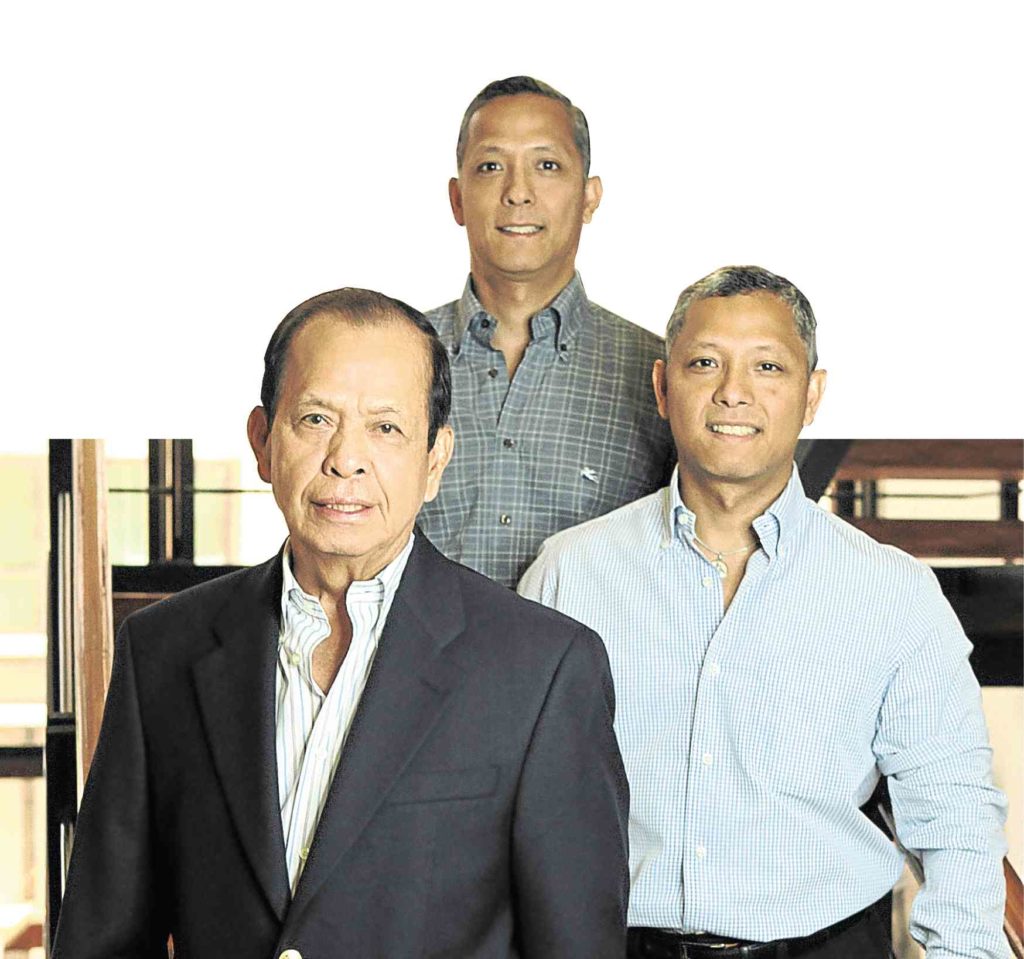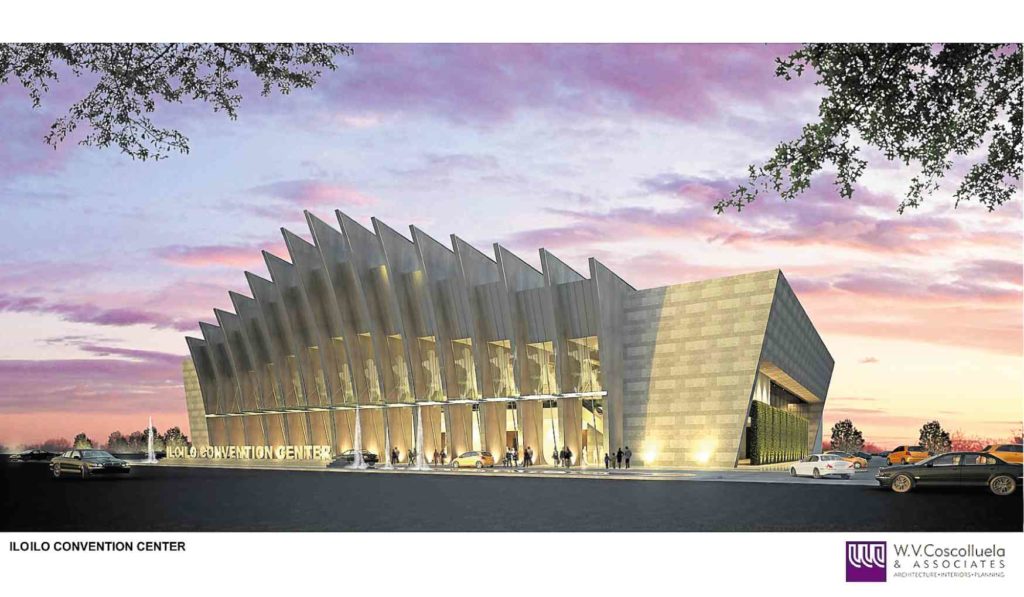Study the history of the development of the Makati central business district, the nerve center of the Philippines’ corporate world, and you will inevitably come across the name William V. Coscolluela, founder of the 61-year-old W.V. Coscolluela and Associates (WVCA), one of the country’s most prestigious architecture firms.
The iconic Ayala Twin Towers, JG Summit Center, Philamlife Tower, RCBC Plaza, World Trade Centre and the multiawarded Zuellig Building are but some of the corporate landmarks that bear the unique stamp of Coscolluela.
So do the SM City North Edsa, Robinsons Galleria Complex (like the RCBC Plaza, it’s one of the country’s largest mixed-use developments), SM Aura Premier, SM Megamall, Landmark Trinoma, Landmark Filinvest, the revitalized Tutuban Center, and the Quezon City Sports Club in other parts of the capital.
Outside Metro Manila, Coscolluela executed the Iloilo Convention Center (Coscolluela’s homage to his hometown), SM Seaside City in Cebu, Tagaytay Highlands Family Clubhouse, Eagle Ridge and Orchard Golf & Country Clubhouse and Discovery Shores Boracay.
And the list continues to lengthen as Coscolluela, who at 84 is still the first person to come into the office and usually the last to go out, has no intention of bowing out of the game, even if he has delegated the day-to-day operations of the 100-strong company to his twin sons, Gary and Gil, who are sought-after architects as well.
Coscolluela, who still has a spring in his step, tells the Inquirer that he cannot contemplate retirement as hard work is embedded in his DNA, a trait that allowed him to rise from modest beginnings in Iloilo to become one of the strongest forces in the local architecture scene.
The propensity for hard work combined with his superior intellect allowed him to graduate with the President’s Gold Medal for Architecture from the Mapua Institute of Technology, and thus he punched his ticket to a job under his professor turned mentor, Cesar Concio, who was dean of the College of Architecture when he was a student.
He worked by the side of the exacting Concio for two years before he could take the board exams for Architecture, and he considers those two eventful years the solid foundation on which he built his company, that started with just a small group of driven individuals.
“During that time I was working with him, he gave me big responsibilities. I worked on the Insular Life building, and also the Redemptorist church under him. I remember that he was very strict on design and presentation to clients,” says the affable Coscolluela.
“I admired him because he always found the right solution to building problems. Working with him was valuable experience for a newcomer. He was a nice boss but also very strict,” he adds.
But while he greatly valued and appreciated being taken under the wing of his former dean, who was also one of the most influential architects during his time, Coscolluela knew he could not survive for long on just 38 centavos an hour. He would even work overnight on projects just so he could earn more.
He was 23 when he left the Concio office and bravely struck out on his own. His first client was Larry Henares, who contracted him to remodel his house in Inocencio, Pasay.
From that first job, which was referred to him by a common friend, Coscolluela was exposed to Henares’ colleagues and the clients of the family-run paint company. He ended up remodeling the houses of some of the most notable figures in Philippines business at that time.
“Remodeling is more difficult than building a new house. That is where you will learn patience. Mr. Henares and I grew very close while doing the house. Up to now we still get together. I’ve learned that if you serve your clients well, your company will do well. All of my clients eventually became my friends and they were the ones who referred me to their own friends,” he says.
Coscolluela says he approaches all projects, whether a remodeling project or a large multibillion-peso building project, the same way he treats them as if they were his own.
“At the end of the day, my name is there. If you do that, they will go back to you,” he says.
Coscolluela says architecture is about efficiency—in space and in cost. It is a must to approach the design with the desire to be efficient, especially today when costs are calculated per square meter, he says.
It is this approach to efficiency that perhaps attracted Coscolluela to retail tycoon Henry Sy Sr., the Philippines’ richest man according to Forbes magazine, and also the one who gave him his biggest break when he gave him the responsibility to build SM North Edsa.
They first worked together when Coscolluela helped in the development of SM Makati, which was handled by another principal architect. Satisfied of his work, Sy tapped Coscolluela to execute his vision of a supermall, the first in the country.
“At that time everybody was leaving the country but here was Henry Sy intent on building a large mall. We did that and we continued to redevelop that up to today,” he says, “With him, he loves to do functionalities. That was his main thing.”
With the gigantic testament to his skills, which also marked his biggest transition from residential to large commercial development, he was tapped to do other malls such as Robinsons Galleria. From SM Supermall, he went on to design Megamall and then SM Aura. He also did the SM Seaside development in Cebu.
But he would not stop with just one retail magnate.
Coscolluela, who set up shop in 1957, ended up becoming the first architect of others who would become giants in their own right in the property sector.
These include John Gokongwei Jr., who got Coscolluela to do Robinsons Land Corp.’s Galleria Complex; Megaworld Properties & Holdings Inc.’s Andrew Tan, for One Beverly Place in Annapolis, Greenhills; and Alfonso Yuchengco, for RCBC Plaza.
For him, what set his architecture practice apart and put it on the top of the rankings was the early decision to collaborate with foreign architectural firms.
“Collaboration with foreign consultants really helped us. We were one of the first to do that. We started with Andrew Tan when he did his World Trade Centre. He made us work with a New York-based architect. We also did that when we did the RCBC Plaza, which was the first large mixed-use development of its kind,” says Coscolluela.
He recalls being criticized by his peers for working with foreign consultants as many believed that the local architects did not lack in talent. But while he agreed that there was a wealth of talent in the Philippines, there were more gains from working with foreign consultants, foremost was the access to the latest technology in construction, the latest trends and more importantly, the elevation to higher standards of construction and design.
“During that time we were not that big yet. But with the entry of their systems, we were able to upgrade ourselves. There was a good healthy interaction and we learned from them,” explains Coscolluela. “I think now with Asean integration, with the entry of architects from other countries, we are more than prepared to compete.”



